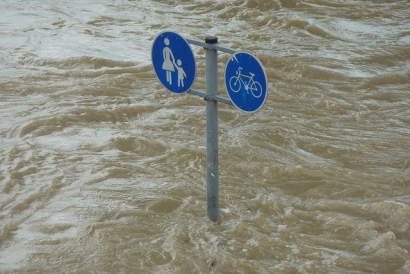
Human consumption currently outpaces the Earth's supply, and finite resources are being used at a completely unsustainable rate. Furthermore, we must find more efficient ways to successfully preserve or manage land since more land is needed than ever to fit the growing population.
However, changes in energy production could potentially have a positive impact on future global energy needs. Investing in sustainable power today may make for a greener tomorrow. Addressing climate change today is key to preventing future stress down the road. Global energy consumption is increasing rapidly, and our resilience to climate change is threatened as long as we depend on vulnerable systems, like fossil fuels, to power our world.
Climate change informs everything about our world, from how we preserve our water sources to how we collect energy. However, renewable options such as solar power can mitigate the effects of climate change and increase energy availability. For these solutions to work, we must first become familiar with how extensively global warming has affected power production across the world. Here are a few of the affected areas:
Climate change is affecting energy production across the board. From the electricity that powers homes to the water treatment plants that irrigate crops, transformations in the global climate impact all sectors. A trend in rising temperatures results in more air conditioning usage in residential homes. When global temperatures change, other shifts come with this phenomenon — such as how we produce crops, store energy and maintain power grids.
The energy industry is both a huge consumer and polluter of water. Fossil fuel production is carbon- and water-intensive. Coal plants, nuclear power plants and hydroelectric dams all depend on reliable water sources. With water levels being threatened, these industries will feel the immediate effects. Finding more water-efficient energy production systems is crucial.
Coastal communities around the world are feeling the effects of rising sea levels. Research demonstrates that 15 major United States cities will be underwater by 2050. This statistic shows the severity of this issue and the need for an immediate solution. Heightened sea levels will be particularly damaging for the oil industry. Oil refining plants are often situated on the coast, meaning the resilience of these infrastructures will come into question.
Weather patterns are changing, and extreme storms are an increasing threat. Severe weather will influence electricity generation, oil and gas production, energy storage facilities and energy transport. While the impact may vary regionally, the vulnerabilities of the electricity sector are especially noticeable when wildfires, flooding and other natural disasters threaten production.
Climate change is already influencing global energy needs, and its impact will continue increasing in upcoming years. Population growth and resource consumption are driving power demand on a worldwide level, with more people than ever before connected to electricity grids.
Our clothes, food, modes of transportation, homes and recreational activities all require power. Our health care system and every amenity that we take for granted require some form of energy production. If we are to reduce the impact of climate change on our electricity supply, it's time to take action now.
The first step to reducing energy stress is to find and invest in low-carbon solutions. The renewable industry is exploding, and communities all over the world are looking for alternatives to fossil fuel consumption. In addition to investing in solar power and other renewable forms, it will also be vital to adjust the systems we depend on that use the most energy. Agriculture, textile manufacturing, transportation and construction will need to seek alternatives requiring less energy use.
If more sectors adopt solutions that use less electricity, they will become more resilient in the face of climate change. A series of small, purposeful actions in the present will make a great difference in the future.
Emily covers topics on sustainability, renewable energy and conservation. You can read her blog, Conservation Folks, or follow her on Twitter for her latest updates.

